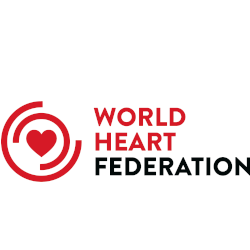WHF Roadmap
The World Heart Federation Roadmap for Nonvalvular Atrial Fibrillation
Abstract
Background: The World Heart Federation has undertaken an initiative to develop a series of Roadmaps to promote development of national policies and health systems approaches, and to identify potential roadblocks on the road to effective prevention, detection, and management of cardiovascular disease in low-and middle-income countries (LMICs) and develop strategies for overcoming these. This Roadmap focuses on atrial fibrillation (AF). AF is the most common, clinically significant arrhythmia and, among other clinical outcomes, is associated with increased risk of stroke.
Methods: Development of this Roadmap included a review of published guidelines and research papers, and consultation with an expert committee comprising experts in clinical management of AF and health systems research in LMICs. The Roadmap identifies 1) key interventions for detection, diagnosis, and management of AF; 2) gaps in implementation of these interventions (knowledge-practice gaps); 3) health system roadblocks to implementation of AF interventions in LMICs; and 4) potential strategies for overcoming these.
Results: More research is needed on determinants and primary prevention of AF. Knowledge-practice gaps for detection, diagnosis, and management of AF are present worldwide, but may be more prominent in LMICs. Potential barriers to implementation of AF interventions include long distances to health facilities, shortage of health care professionals with training in AF, including interpretation of ECG, unaffordability of oral anticoagulants for patient households, reluctance on the part of physicians to initiate oral anticoagulant (OAC) therapy, and lack of awareness of the importance of persistent adherence to OAC therapy. Potential solutions include training of nonphysician health workers and pharmacists in pulse-taking, use of telemedicine technologies to transmit electrocardiogram results, engagement of nonphysician health workers in OAC therapy adherence support, and country-specific support and education programs for noncardiologist health care professionals.
Conclusions: AF affects millions of people worldwide and, left untreated, increases the risk and severity of stroke and heart failure. Although guidelines for the detection, diagnosis, and management of AF exist, there are gaps in implementation of these guidelines globally, and in particular in LMICs. This Roadmap identifies some potential solutions that may improve AF outcomes in LMICs but require further evaluation in these settings.


